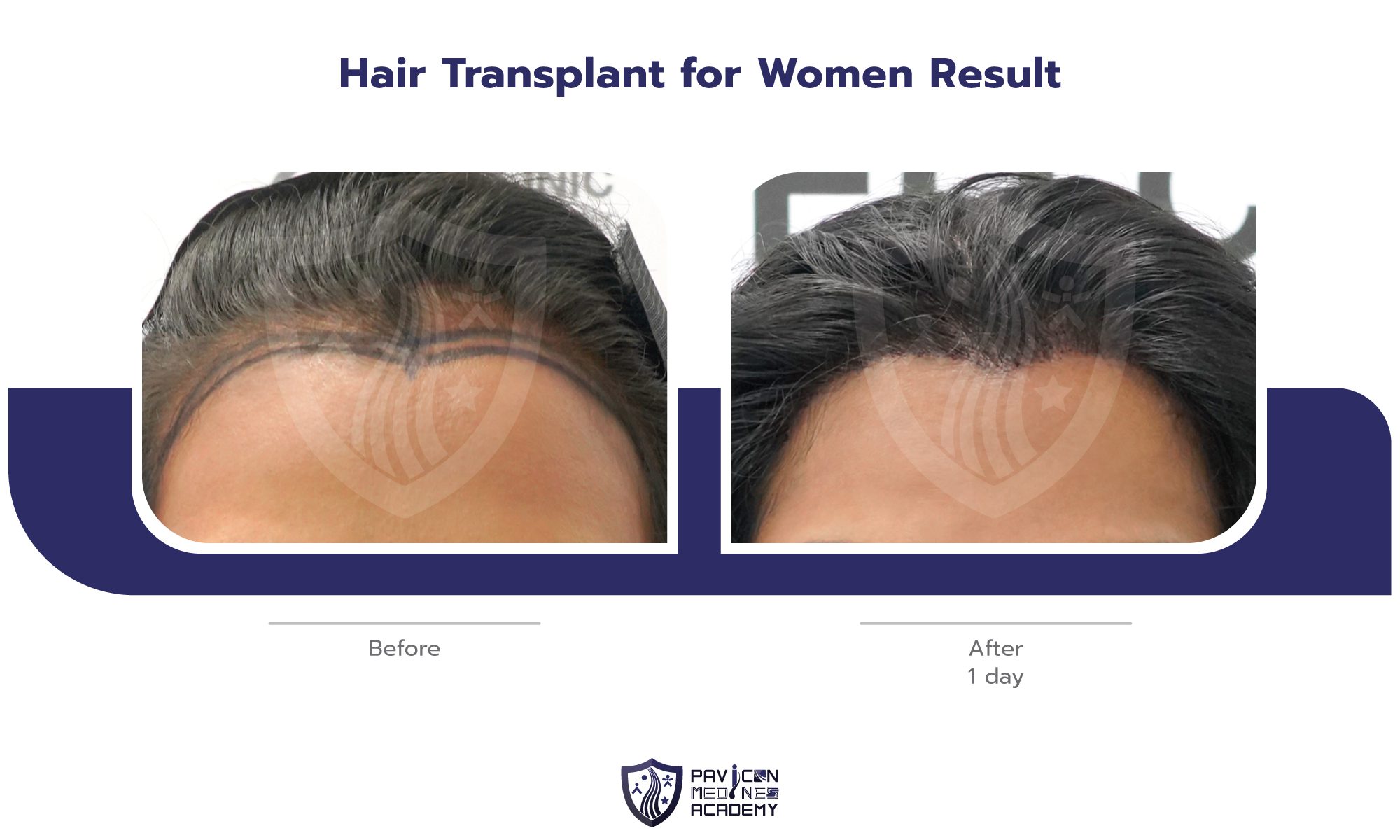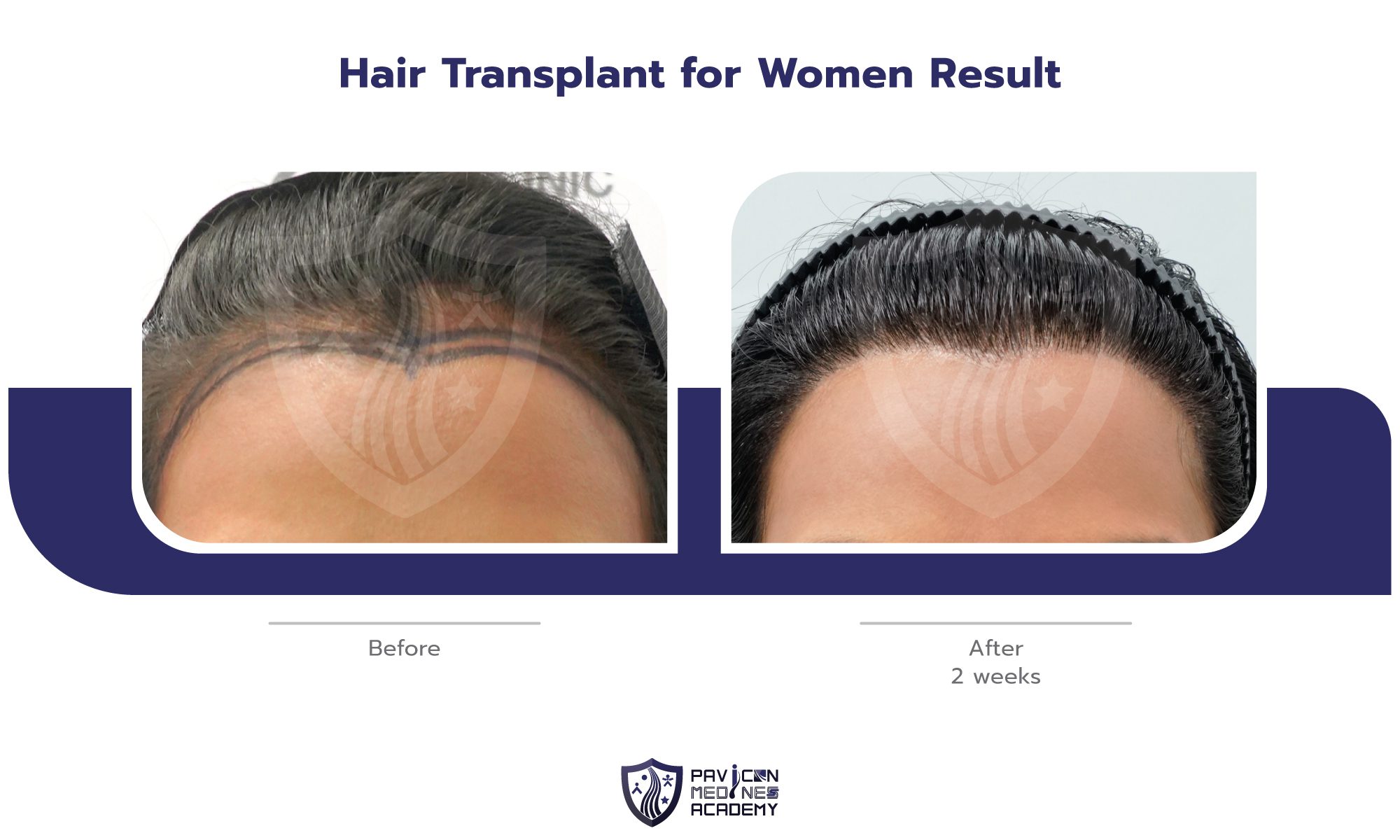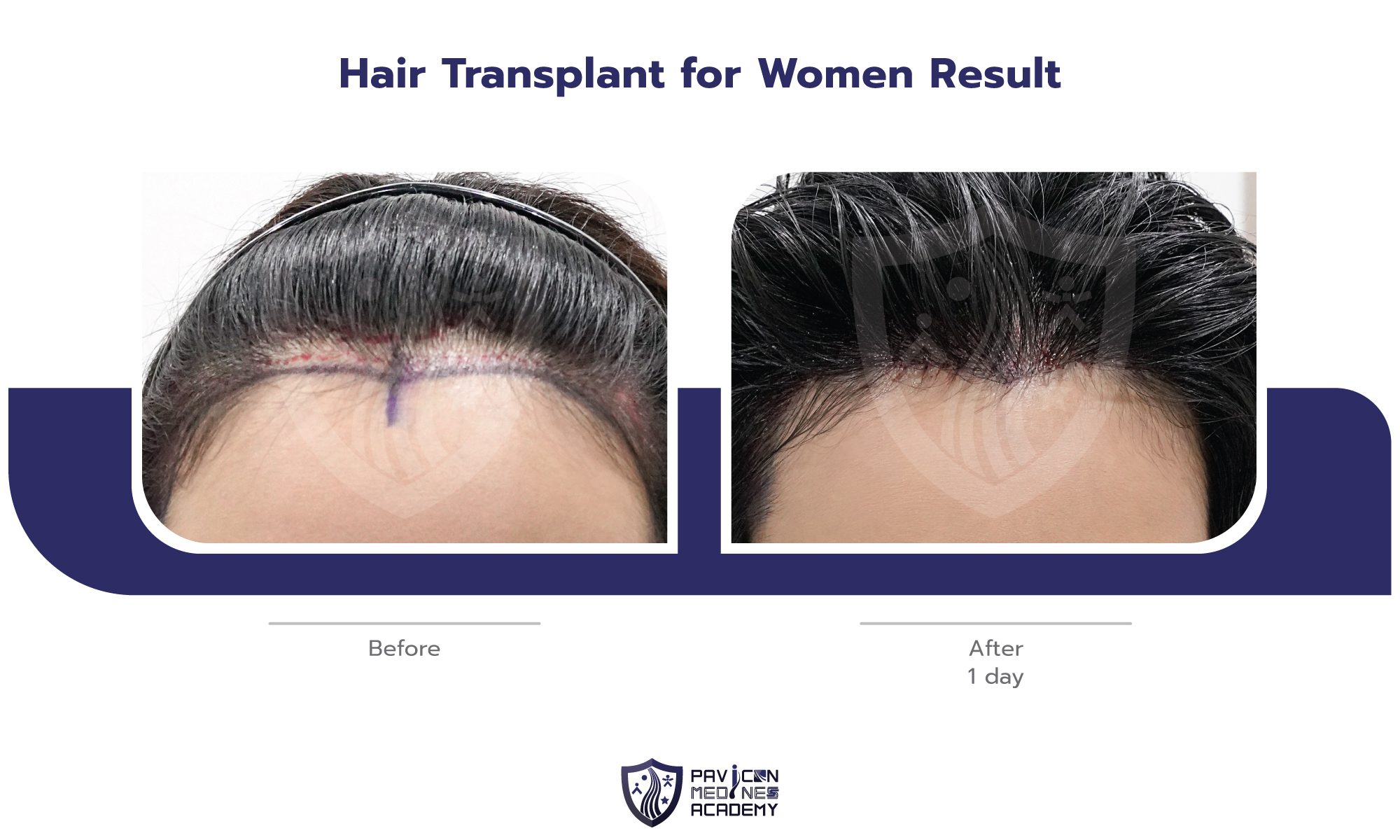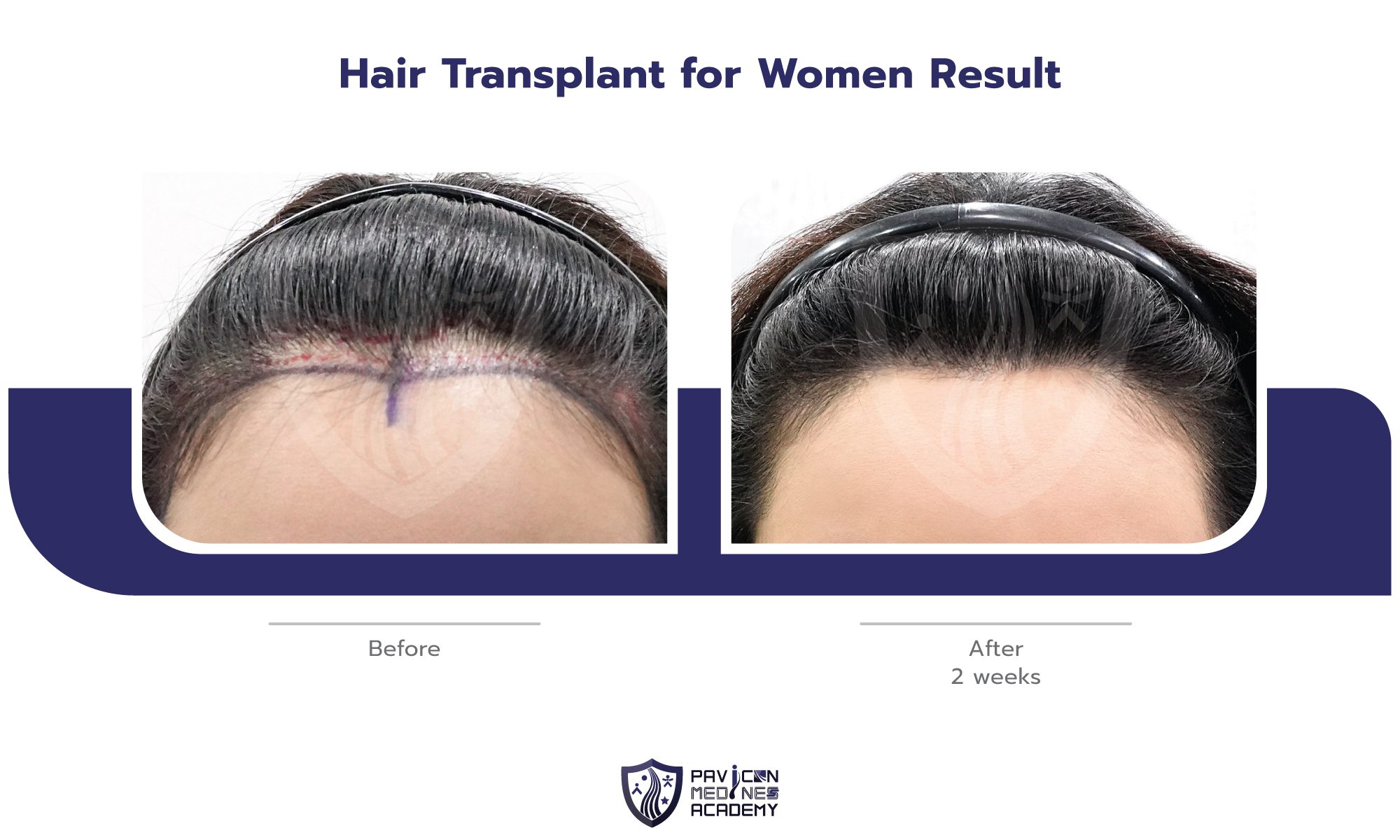Hair Transplantation for Women
Although more men are affected by hair loss compared to women, 42% of women also suffer from androgenetic alopecia. In addition to genetics, hair loss in women can caused by unbalanced diet, stress, and menopause. One of the most effective methods for treating female androgenetic alopecia is hair transplantation.
Female Androgenetic Alopecia
Hair loss in women is the thinning of hair without scarring and gradually thinning, especially on the front, middle and sides of the scalp. The size of the hair and hair follicles are also getting smaller. Besides genetics, baldness in women is caused by a number of factors such as inflammation, hormones and even the environment play a role.
History taking, physical examination especially scalp endoscopy, blood testing for hormone mineral levels are important in diagnosing the common causes of hair loss and hair thinning in women apart from androgenetic alopecia.
Progression of Hair Loss In Women
Female androgenetic alopecia is significantly different from male androgenetic alopecia and is classified by using the Ludwig scale. In women, hair loss usually begins in the middle of the crown and then extends towards the back of the head and hairline and may extend laterally in advanced stages.
In many cases, there may be diffuse hair loss along the hairline. However, complete hair loss or partial baldness is very rare in women. The degree of female androgenetic alopecia can be represented by the Ludwig or Olsen scale. (“Christmas Tree”)
Topical Treatment
- Minoxidil 2-5% increases blood circulation in the scalp and prolongs the Anagen phase.
- Prostaglandin Analog, such as 0.1% Latanoprost can prolong the Anagen phase.
- Ketoconazole has anti-inflammatory properties and acts as Androgen-Receptor Antagonist
- Melatonin has strong antioxidant properties. The use of 0.1% Melatonin hair drops can prolong the Anagen phase.
PRP Platelet-Rich Plasma
Low Level Laser Therapy
Oral Medications
Medication should be taken under the supervision of a physician and continued follow-up due to the limitations and side effects of medications that require caution such as Finasteride, Minoxidil, Spironolactone, Flutamide.
Hair Transplantation
Hair transplantation is required for the areas with no hair follicles left.
Who Is a Good Candidate for Hair Transplantation?
Unfortunately, although most men suffering from hair loss are good candidates for hair transplantation, the number of women who are good candidates for hair transplantation is much smaller. This is because women are more prone to suffer from diffuse hair loss than pattern baldness. In addition, there are thinning hair all over the head those who suffer from diffuse hair loss, so the donor area is much smaller. According to our hair transplant study, 15.8% of hair transplants are performed in women.
Women who suffer from hair loss on the crown area and still have healthy, strong hair on the sides and back of the head are the good candidates for transplantation. Hair in these areas is used in hair transplantation as they are resistant to DHT and are not susceptible to hair loss.
Although there are many women significantly suffering from hair loss, this problem can be easily solved by hair transplantation. Hair loss problems found in women include androgenetic alopecia, mechanical alopecia, receding hairline, scars from plastic surgery and hair loss due to injury. To achieve a more feminine and natural appearance, hair transplantation is also commonly used in transgender women.
Types of Hair Transplantation In Women
- Increase the density of hair of certain parts of the head
- Redesignthe hairline
- Lower the hairline
- Eyebrow transplantation
- Scalp reduction surgery
- Scar concealing
Hair Transplantation Procedure In Women
Not only an affective option for female androgenetic alopecia, but hair transplantation is also suitable for hair loss caused by an accident and for reducing the size and height of the forehead.
Hair transplantation in women carry the same risks as in men and with the same procedure. There are three most common hair transplantation methods performed in women: FUT (Follicular Unit Transplantation), FUE (Follicular Unit Extraction) and DHI.
The main differences in the three methods are in their extraction steps. In DHI and FUE methods, each hair follicular unit is extracted from the donor area by using a small, hollow drill. In FUT, a strip of skin tissue is removed from the donor area and then dissected into smaller hair follicular units under the microscope. In DHI method, a special tool called Implanter is used.
The donor area is usually at the back of a patient’s head, where the hair is resistant to dihydrotestosterone (DHT), a hormone transposable for hair loss in androgenetic alopecia.
The resulting hair follicles units are then transplanted in the desired area. These hair follicles units do not loss their resistance to DHT after transplantation and therefore continue to grow permanently.
Alternatives to Hair Transplantation In Women
For thinning hair, topical medications as mentioned above or oral medications to be discussed below may be used. In the event that the scalp area has no hair follicles left, hair transplantation is required.
There are a number of other therapies that can be used to stimulate hair growth, including PRP therapy and low-level laser therapy. Both treatments improve blood flow to the scalp, help nutrients reach the hair follicles and stimulate hair growth. Unfortunately, finasteride is not suitable for hair loss in women unless they have reached their menopause for many years with no other health-related contraindications.
Hair styling, such as hair coloring, can also help reduce the appearance of diffuse hair loss. In addition, it is easier to hide hair loss in women as they tend to wear their hair longer than men.
Hair Transplantation Cost for Women
There are no significant differences in the cost of hair transplantation between women and men.
According to our hair transplantation cost study, the average cost of hair transplantation in the UK, the USA and Thailand cost are 108, 182 and 30 Baht per graft, respectively.
The average total cost for 2,500 grafts is about 75,000 Baht in Thailand. However, as hair transplantation is a cosmetic surgery and is not medically necessary in most cases, it is not covered by health insurance.




FAQ
Hair transplantation cost in women depends on the degree of the hair loss, the number of grafts, the techniques and tools used, and the expertise of the hair surgeon.
In FUT method, there is no need to shave the donor area on the back of the head. Therefore, scars can be easily concealed in women. However, this method leaves a linear scar.
Currently, there is a new technique called Long Hair DHI that uses a small drill to extract the hair grafts without cutting or even trimming the hair. These hair grafts are of normal length and can be immediately transplanted into the recipient area.
The transplanted hair is resistant to DHT, a hormone responsible for hair loss (in androgenetic alopecia). After transplantation, the hair from this area retains this property and will grows back on its normal cycle.
After hair transplantation, you can take care and style your hair as normal and natural hair. After recovery, you can color, trim, and perm your hair as you desire after permitted by your doctor, who will examine the strength of the new hair and scalp.